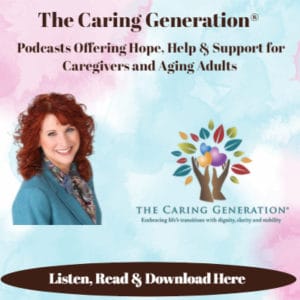What is the Patient Experience in Healthcare?
What is the patient experience in healthcare? Who better to answer this question than patients? However, if you Google the questions, “what do patients think about patient experience?” or “what do healthcare workers think about the patient experience?” guess what? Nothing results from the search. Zero. Zip.
What responses do result from the Google search? List after list of corporations trying to answer the question, “what is the patient experience in healthcare?” Articles that target hospitals and healthcare organizations result from this search without directly addressing the patient or the consumer.
If you happen to be in a hospital or on a medical campus you might see signs talking about patient experience. Are these signs and notices for the hospital or medical campus employees or for the patients or the consumers?
Consumers and The Patient Experience
It’s no wonder that most consumers have no idea that there is a patient experience in healthcare. All consumers know is that many of them are dissatisfied or uncertain about the patient experience in healthcare.
 A simple example is an experience of trying to make a doctor’s appointment. Making a doctor’s appointment involves making a call to an office that is busy—phones ringing on all lines. The caller is placed on hold for an unknown time. After being on hold for 15 or 20 minutes the call may be disconnected.
A simple example is an experience of trying to make a doctor’s appointment. Making a doctor’s appointment involves making a call to an office that is busy—phones ringing on all lines. The caller is placed on hold for an unknown time. After being on hold for 15 or 20 minutes the call may be disconnected.
If someone does eventually answer the phone, the response may be that the doctor’s calendar is not available, resulting in the need for another time-consuming call to the office. Or if the doctor is available, the times may not be convenient for a working caregiver.
Surveys, Electronic Health Records and the Patient Experience
Some consumers are aware of receiving an occasional survey in the mail that is tossed in the trash incomplete. Others may receive phone calls for healthcare surveys. Other patients may be aware that there is some computer system—an electronic health record—(in medical speak this means AHR) that hospitals and medical offices want them to access.
Statistics cited in a Health Affairs study (1) reported that “hospitals gave 95% of discharged patients access to view, download, and transmit their information, but only 10% of those with access used it.” What is this telling us? Are patients disinterested in their healthcare? Possibly.
It may be more likely that consumers do not understand the benefits of accessing an electronic health record or what to do with the information. While the healthcare system “gets it” and workers can read and understand the medical speak terms—most consumers have no idea what to do with the medical records.
For some consumers, the challenge of registering for a system used on a one-time basis is too much trouble. Others may not have easy access to a computer or may be in a location with dismal Internet speeds.
Healthcare Workers and The Patient Experience
Asking the same question, “what do healthcare workers think about the patient experience?” results in the same zero responses on Google. Healthcare workers know about HCAHPS but might not be able to state what the letters stand for—all they do know is that supervisors constantly talk about the patient experience in healthcare.
Many healthcare workers are rushed and burned out. The idea of being more helpful to patients when healthcare workers may not feel supported by their organizations may feel unjust. In my opinion, the patient experience will improve when healthcare workers are better trained and feel more valued.
Patients and Consumers Are Captive Users of Healthcare
It is also my opinion that consumers and patients are held captive by the healthcare system. What does this mean? Hours spent at hospitals and in waiting rooms—waiting. In the twenty years I have worked as a patient advocate I have spent thousands of hours waiting for medical appointments that were running late with my clients. Consumers are then rushed in and out of medical appointments without being prepared for the appointment or having their questions answered.
The healthcare system has not educated consumers on using the healthcare system because the system has been the “boss.” The healthcare system dictates the lists of approved doctors within insurance plans for patient appointments. Insurance plans guide the locations for lab tests, the amounts for co-pays, and the approvals for prescription drugs. Limited choices have traditionally been the option.
The healthcare system is a business where consumers are held captive and used to insurance rules and regulations. The system treats not prevents. Considering this, a transition to thinking consumers who are proactive about healthcare can be part of the solution, it’s no wonder that participation rates in patient engagement and education programs are low.
HCAHPS Hospital Consumer Assessment of Healthcare
HCAHPS means Hospital Consumer Assessment of Healthcare. Another medical speak term that consumers don’t understand or recognize. The idea of patient experience in healthcare is prevalent throughout the system. Medical offices, labs, testing centers, nursing homes, hospitals, assisted living communities and other organizations are searching to answer the question of how to achieve a better patient experience.
The Patient Experience Takes A Consumer-Oriented Experience
How many consumers would love to fire their doctors but feel stuck? How many doctors would love to fire their non-compliant patients? The dislike gos both ways.
How many think that receiving medical care is too much trouble or too expensive? Because the healthcare system has not been consumer-oriented—it’s not like the system needs MORE patients—treating patients like consumers who deserve to be satisfied is challenging.The patient experience is an entirely new way of thinking about how to interact with the consumer.
Medical offices are overflowing with patients. Hospitals don’t have enough doctors. A nursing shortage exists. A workforce shortage exists in the area of home health and in-home care agencies that help elderly adults stay at home. How can the healthcare system be more attentive to the elderly and their caregivers?
With these challenges, delivering a positive patient experience will be difficult. Customer service training and programs take time and cost money. Spending more time with patients costs money and results in more administrative time not billed but to be absorbed by hospital systems.
Healthcare Workers are Healthcare Consumers
Healthcare workers are also healthcare consumers. Some are more educated than the general public but still may not be proactive in taking care of their health and well-being. How many healthcare systems are as proactive in promoting employee health as corporations operating outside of healthcare?
What might the benefit be of educating healthcare workers to take better care of themselves? Might skills be learned that are transferable to working with the general public—consumers and patients? By healthcare consumers receiving better customer service, they might be able to offer better customer service to consumers and patients.
Transforming the Patient Experience
To reach the level of transformation that a positive patient experience requires, one has to understand the experience of receiving excellent customer service. Or perhaps have had the experience of excellent customer service. Here are five quotes about excellent customer service:
1 – “Customer service should not be a department. It should be the entire company.” Tony Hsieh, CEO Zappos.com
2 – “It takes 20 years to build a reputation and five minutes to destroy it.” Warren Buffet, Investor
3 – “Customers don’t expect you to be perfect. They expect you to fix things when they go wrong.” Donald Porter, VP, British Airways
4 – “Good customer service begins at the top. If your senior people don’t get it, even the strongest links further down the line can be compromised.” Richard Branson, CEO Virgin Group
5 – “There is only one boss. The customer—and he can fire everybody in the company from the chairman on down, simply by spending his money somewhere else.” Sam Walton
This last quote by Sam Walton gives clarity to the issue with the healthcare system. Consumers truly can’t spend their money somewhere else. Healthcare consumers are held captive by company insurance plans and everything that ties them into using approved healthcare providers.
Free Healthcare Isn’t The Answer
A colleague said to me, “lowering the cost of healthcare insurance would improve the patient experience.” I disagree. Has Medicaid improved the patient experience? Doubtful.
Medicare for All? Not the answer either. Do we expect and believe that elected officials and millionaires would participate in Medicare for All? The idea of free healthcare is nice. The idea of free everything is nice but impractical for many reasons.
Lack of Cost Transparency Has Hurt the Healthcare System
When a good or service has no value, the good or service is not valued. Value for payment is part of the crux of the problems of the healthcare system. Hiding costs from consumers and patients for too long has resulted in greater dissatisfaction by the consumer.
Health insurance premiums are subsidized by employers making it easy for consumers to be less involved in paying for healthcare costs. The result, employees who take less responsibility for health and well-being.
Because employers have traditionally paid the majority of healthcare costs, consumers have not taken an active role in being proactive about health and well-being. If one does not see the dollars going out or the value of healthcare provided it is difficult to value healthcare received.
Concerns by patients today include the cost of medical care, co-pays, and a desire for payment plans for medical bills. Cost transparency, in my opinion, is positive. Many consumers would be surprised to know that healthcare costs vary by county within states.
Employers are working on a change in this area by providing healthy workplace programs. Progress is made by offering company perks like gym memberships and onsite fitness centers. Making it easy to access exercise solutions results in a healthier workplace.
What is the Patient Experience in Healthcare?
The answer to this question remains to be seen. Electronic medical records, if used, can make the patient experience easier and less time-consuming. Chronic disease education, if used, can reduce healthcare costs and help patients to be more proactive about their health and the health of loved ones.
Talking to patients about the consequences of health diagnosis—thinking about healthcare instead of sick-care—can make a difference. Explaining health diagnoses, treatments, and medications can help consumers become more educated and engaged.
Talking about healthcare goals within the healthcare system, and with patients may begin to transform the system. Treating patients like consumers who have a choice to go elsewhere (even though they really can’t) will transform the patient experience in healthcare.
Making these changes is up to the present generation. Where will be we in 5 or 10 years? In the same place or light years ahead?
Looking for More Ideas About What Patients Worry About? You’ll Find What You’re Looking For Costs of Care.
Source:
(1) Lin, S.C. et. al. Are Patients Electronically Accessing Their Medical Records? Evidence From National Hospital Data. Health Affairs. Vol 38, No 11, 11/2019. https://doi.org/10.1377/hlthaff.2018.05437
© 2019, 2021 Pamela D. Wilson, All Rights Reserved.
Return to Health Care Providers Category



